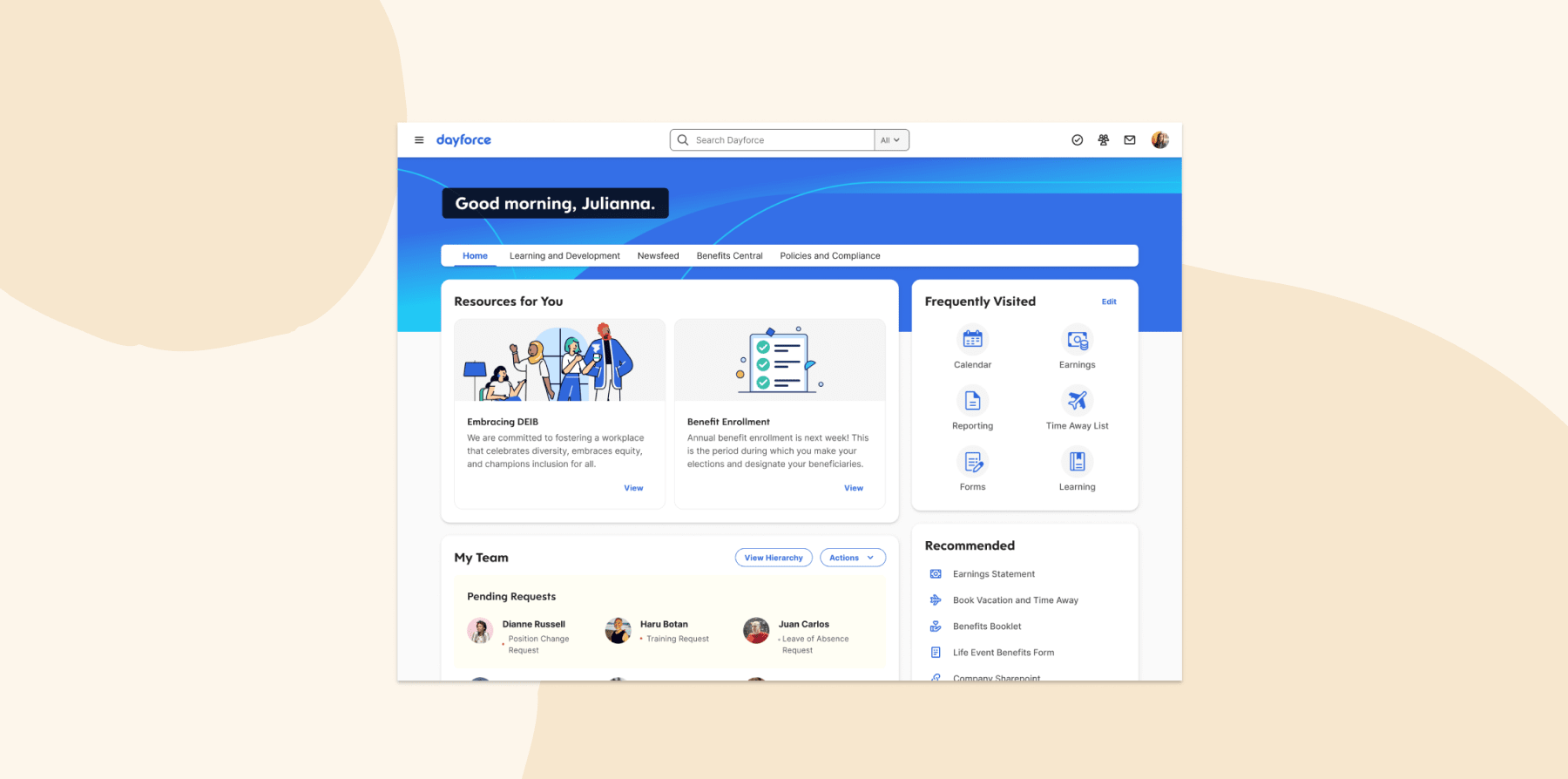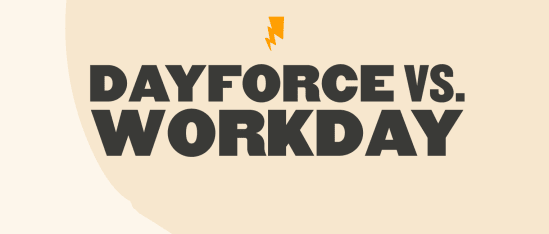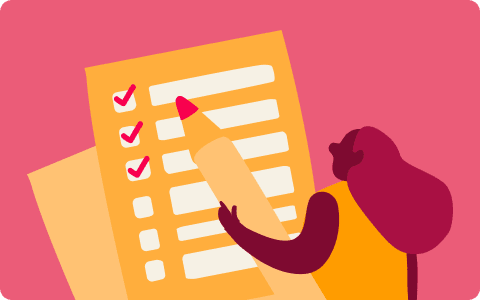HR platforms shape how your company hires, pays, and supports your people. Two of the most widely used systems are Dayforce and Workday.
While both platforms deliver value, the best fit depends on your company’s size, growth strategy, and compliance needs. Understanding how each one supports these areas can help HR and business leaders reduce risk and build a more resilient HR foundation.
In this comparison, we’ll review Dayforce vs. Workday across features, pricing, and overall value—plus highlight other HR software that prioritize engagement and onboarding as your organization scales.
What is Dayforce?
Dayforce, previously Ceridian Dayforce, provides an AI-powered people platform that brings HR, payroll, workforce management, talent, and analytics into one system. The platform helps companies manage people data, maintain payroll accuracy, and streamline scheduling without relying on multiple disconnected tools. It also integrates compliance support to help organizations keep pace with shifting labor regulations.
Dayforce works well for mid-sized businesses to large enterprises with complex HR requirements. Industries such as retail, hospitality, manufacturing, and financial services often use the platform to manage large workforces and minimize administrative risk. Organizations with international operations can also benefit from Dayforce’s ability to deliver payroll and workforce insights across regions.

Dayforce pros:
- “Dayforce is a comprehensive HCM platform that brings together payroll, HR, benefits, and workforce management in one system. It’s particularly strong in compliance and real-time payroll processing. While it can have a learning curve, it’s powerful for organizations looking for an all-in-one solution with deep functionality.” – user review
- “It is simple to use when it comes to keeping a record of shift timings.” – user review
- “I love the fact that I can actually see who I am actually working with. The layout is also really easy to understand and navigate.” – user review
- “It is an all-in-one platform that allows me to utilize both management and employee functions from the same login.” – user review
- “I love how flexible Dayforce is and the ability to scale up. Great system to have everyone in different countries on the same platform.” – user review
Dayforce cons:
- “Dayforce brings a lot of functionality into one platform, which is great for managing payroll and HR in a centralized way. That said, the system can feel a bit complex at times, especially for new users or smaller teams. Once you get used to the layout, though, it offers powerful tools for workforce management and compliance.” – user review
- “I dislike the system responsiveness and speed as there could be slow load times, especially during peak payroll, for example.” – user review
- “Not as customizable as it should be in 2025” – user review
- “I don’t like the fact that sometimes it logs me out of the system after a few minutes.” – user review
- “I don’t love the interface, I feel like it seems a bit outdated, and it also takes time navigating to find different things I am looking for.” – user review
What is Workday?
Workday launched in 2005 with a focus on moving HR and financial data into the cloud, a new approach at the time. Today, it offers an AI-driven platform that combines human capital management, financial management, planning, and analytics. The platform centralizes HR and finance so enterprises can manage people and money in a single system.
The platform suits large organizations that can dedicate time and resources to implementation and ongoing management. Companies in industries like financial services, healthcare, higher education, and technology often rely on Workday to manage global operations and complex compliance requirements. Its focus on scalability makes it a strong fit for enterprises with diverse and distributed workforces.

Recommended For Further Reading
Workday pros:
- “Workday HCM is very user-friendly. It’s very intuitive. You know what the next step would be, and you like the user interface. Best part is it’s all on cloud, which helps in having the latest data and features available every time you log in.” – user review
- “Workday brings together recruiting, onboarding, compensation, benefits, time tracking, payroll, and performance into one platform.” – user review
- “Fairly easy to use if you learn how to use the Workday HCM properly. Has a lot of functions that can help a company be successful. It’s nice that Workday can be adaptable to your business needs and can integrate with other systems such as MarketPay, JD Expert, and LinkedIn Learning.” – user review
- “Personnel information, attendance management, compensation management, etc., can all be viewed on the same screen.” – user review
Workday cons:
- “Workday is an expensive platform, so it may not be a good fit for smaller companies. Also, significant change management is required to capitalize on the benefits of Workday HCM.” – user review
- “One area I’d love to see improved is dashboard customization. It would be great if discovery boards and dashboards could be integrated or used interchangeably. More flexibility here would make it easier to visualize data in ways that suit different teams and workflows.” user review
- “Limited customization for end users, I didn’t like the time tracking feature, finding simple actions (like updating bank info or requesting time off) often takes too many clicks.” – user review
- “The GUI is bland and not intuitive. I think the layout could be better.” – user review
- “It’s hard to navigate. Setting it up was a pain in the neck.” – user review
Workday vs Dayforce: Pricing comparison
Dayforce uses a subscription model that typically charges per team member per month. Pricing varies by the modules selected, and companies often bundle payroll, workforce management, and HR features together.
Workday follows a subscription model as well, often structured around annual contracts with additional costs for implementation and support. Larger enterprises with complex needs usually negotiate customized pricing.
Dayforce vs Workday: Feature comparison
Choosing an HR platform goes beyond brand recognition. It’s about finding a system that supports your people and fuels company growth. Dayforce and Workday both offer robust capabilities, but how they handle payroll, talent management, compliance, and scalability can vary widely.
Compensation and benefits
Dayforce connects payroll and benefits in one platform, which helps HR manage pay accuracy and enrollment in real time. By linking benefits directly to payroll reporting, it reduces compliance risks and keeps data consistent. This approach works well for companies that need payroll and benefits tightly tied together without relying on separate tools.
Workday focuses on building pay structures that scale across global operations. Enterprises use it to model incentive programs, manage salary ranges, and align benefits with compliance requirements across different regions. Its strength lies in supporting large organizations that need consistency across multiple countries.
Performance and talent management
Dayforce includes performance tools that let managers set goals, review progress, and provide feedback within the same system. Talent modules cover recruiting, onboarding, and succession planning, helping HR track the employee lifecycle.
Workday offers performance management through continuous feedback, goal tracking, and career development planning. Its talent management features extend to recruiting, learning, and succession, which support large enterprises with complex workforce planning.
Team member management and engagement
Dayforce provides workforce management that covers scheduling, time tracking, and absence management. The system includes self-service tools so team members can access schedules, pay details, and benefits in one place.
Workday enables people to manage profiles, update personal information, and collaborate on goals. Engagement features include surveys and dashboards that track workforce sentiment across regions.
Payroll and compliance
Dayforce runs continuous payroll calculations so companies can view pay impacts in real time and adjust before processing. The platform also provides built-in compliance tools that track changing labor and tax regulations across regions.
Workday integrates payroll with HCM to support global operations and regional compliance requirements. Its reporting and audit features help enterprises manage tax filings and maintain accurate payroll records.
Financial planning and management
Dayforce connects workforce data with payroll and labor costs to provide visibility into financial impact. Reporting and analytics modules help companies track expenses and forecast workforce-related spending.
Workday includes a comprehensive financial management suite that handles accounting, planning, procurement, and reporting. Enterprises use it to align workforce costs with broader financial strategies and decision-making.
User experience and scalability
Dayforce implementations typically take several months, depending on company size and configuration. The platform supports growth by consolidating HR, payroll, and compliance into one system across multiple regions.
Workday implementations often require a longer timeline and dedicated specialists for configuration. Once deployed, it scales across complex enterprise structures and global operations.
Top Dayforce and Workday alternative: HiBob
HiBob stands out as a modern alternative to Dayforce and Workday by delivering a people-first platform that’s flexible, intuitive, and built for dynamic businesses. Where legacy systems often enforce rigid processes, HiBob empowers HR, finance, and managers to collaborate through customizable workflows, real-time data, and streamlined tools for compensation, performance, and payroll. From equity and bonus planning to transparent salary benchmarks and DE&I support, HiBob connects every stage of the employee lifecycle—helping organizations scale while strengthening engagement and retention.
Unlike traditional systems that dictate how to manage people, HiBob adapts to each company’s culture and goals. It enables performance reviews that tie into compensation, supports engagement through surveys and social tools, and integrates seamlessly with payroll providers across regions.
Build a connected, data-driven, and people-focused HR experience with HiBob.
Dayforce vs Workday: Make the right choice for your HR needs
Selecting an HR platform requires more than just reviewing features. Companies need to consider implementation timelines, the administrative resources involved, and how well the platform supports compliance and growth. Overlooking these factors can lead to higher costs and system changes that disrupt teams and slow progress.
Dayforce suits companies looking to bring payroll, workforce management, and compliance together in a single system. It’s a fit for organizations that want to centralize operations in real time and reduce the risk of managing multiple disconnected tools.
Workday fits enterprises with the capacity—both in budget and personnel—for a longer rollout and ongoing support. Its financial suite and ability to manage complex, global structures make it a solid choice for large companies with needs that go beyond HR.
HiBob stands out as a modern, all-in-one HR platform built to connect, develop, and support your people—wherever they are. From onboarding and training to performance and culture, HiBob helps humanize HR, improve alignment across teams, and scale with confidence. With flexible workflows, global capabilities, and a strong focus on engagement, HiBob gives growing companies the infrastructure they need to thrive.


